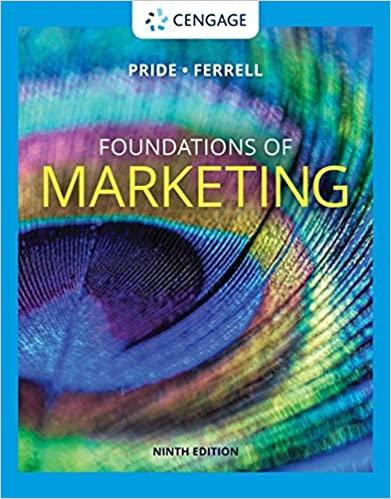Tesla has been pursuing a strategy of aggressive growth since its founding in 2003. The companys mission
Question:
Tesla has been pursuing a strategy of aggressive growth since its founding in 2003. The company’s mission is to accelerate the move to vehicles that will save energy while saving the planet. The key word here is accelerate. Tesla’s strategy combines a long-term vision of a world fueled by renewable energy with a sense of urgency about creating Earth-friendly vehicles that customers will want to drive now.
Because it relies heavily on technology, it’s not surprising that Tesla is based in Palo Alto, California, home to tech giants such as Hewlett-Packard and Facebook. The firm operates a single, highly automated manufacturing plant in Fremont, California. It also built its own massive production facility to supply lithium-ion batteries for its vehicles and developed a network of charging stations from coast to coast. Instead of selling through dealers, Tesla’s strategy is to sell directly to consumers. This unusual arrangement allows more control over the sales process and yields a higher profit margin per vehicle because dealers aren’t part of the distribution channel.
In planning its products, Tesla has gone beyond the
“green” appeal to showcase the style, speed, and status of its vehicles, marketing to people who want a special driving experience. Consider the Roadster, a snappy, low-slung sports car introduced in 2008. The attractive and sporty Roadster broke the mold for traditional electric cars and rocketed Tesla into the public eye.
The company stopped selling the Roadster in 2011 as it focused on launching the Model S, a stylish, high-end,
high-performance sedan with self-driving capabilities. The head designer knew he had to create an all-electric sedan that would stand out in a crowded field of competing vehicles made by international giants such as Audi, BMW, and Mercedes. His design blends the best of today and tomorrow,
creating a classically elegant yet forward-looking exterior.
Just as important, the Model S has an extended driving range, thanks to the company’s advanced battery technology.
Next, Tesla introduced the head-turning Model X, a luxury SUV with unique “falcon wing” passenger doors that open upward for access to rear seating. Thousands of consumers rushed to put down a deposit for this new product, eager to be among the first owners. Despite strong demand, the company struggled to increase production output because of the complexities of manufacturing the unique vehicle and because of parts shortages. Tesla delayed deliveries for months while it ironed out these problems.
Expanding the product line and targeting a new customer segment, Tesla then introduced the Model 3. This sedan is more affordably priced than the firm’s previous vehicles, part of the strategy to enter the mainstream of high-volume, all-electric car marketing. The Model 3 has a modern, uncluttered look with curb appeal. The dashboard is similarly uncluttered, replacing the usual gaggle of gadgets and buttons with one touch-screen control panel.
Enhancing Tesla’s reputation for technology, the Model 3’s “autopilot” feature allows for some driverless operations.
More than 450,000 people have already submitted a deposit of $1,000 each to reserve a Model 3. Still, Tesla has had difficulty bringing production to full throttle and, as a result, has been forced to delay some deliveries.
Looking ahead to the long-term goal of producing 500,000 vehicles per year and profiting from economies of scale, Tesla is hiring thousands of employees and revamping facilities for higher output. It is preparing for several product introductions, including a new Roadster sports car, a Model Y crossover vehicle, and a Semi truck. Can Tesla achieve sustained profitability as it races to meet its ambitious goals, tries to outpace competitors, and seeks to accelerate the transition to renewable energy?
Questions for Discussion
1. How would you describe Tesla’s strengths, weaknesses, opportunities, and threats?
2. What are Tesla’s core competencies, and how do they help the company compete with long-established car companies?
3. What performance standards has Tesla set, and what other standards would you recommend that Tesla use for strategic performance evaluation? Explain your answer.
Step by Step Answer:






